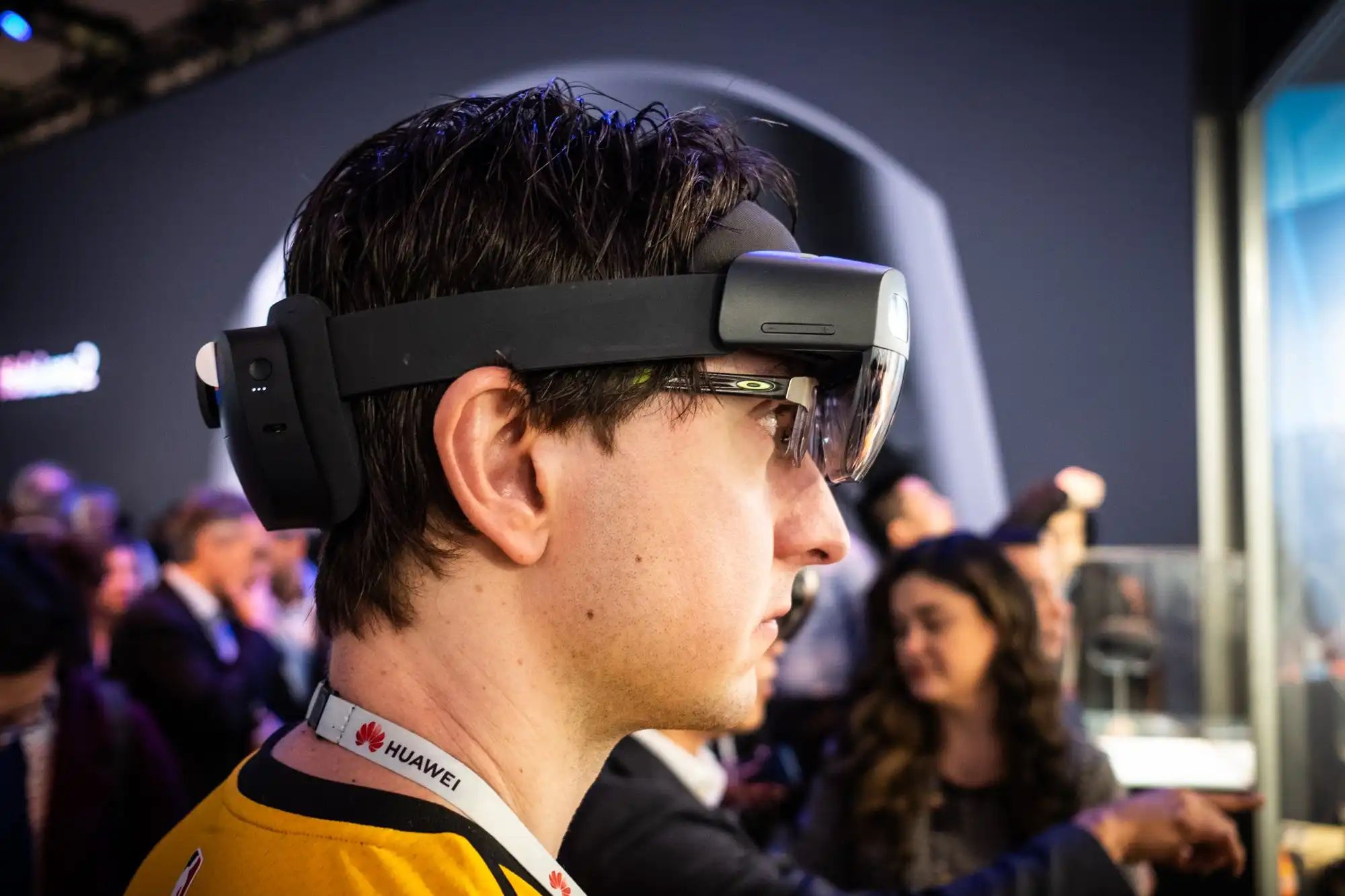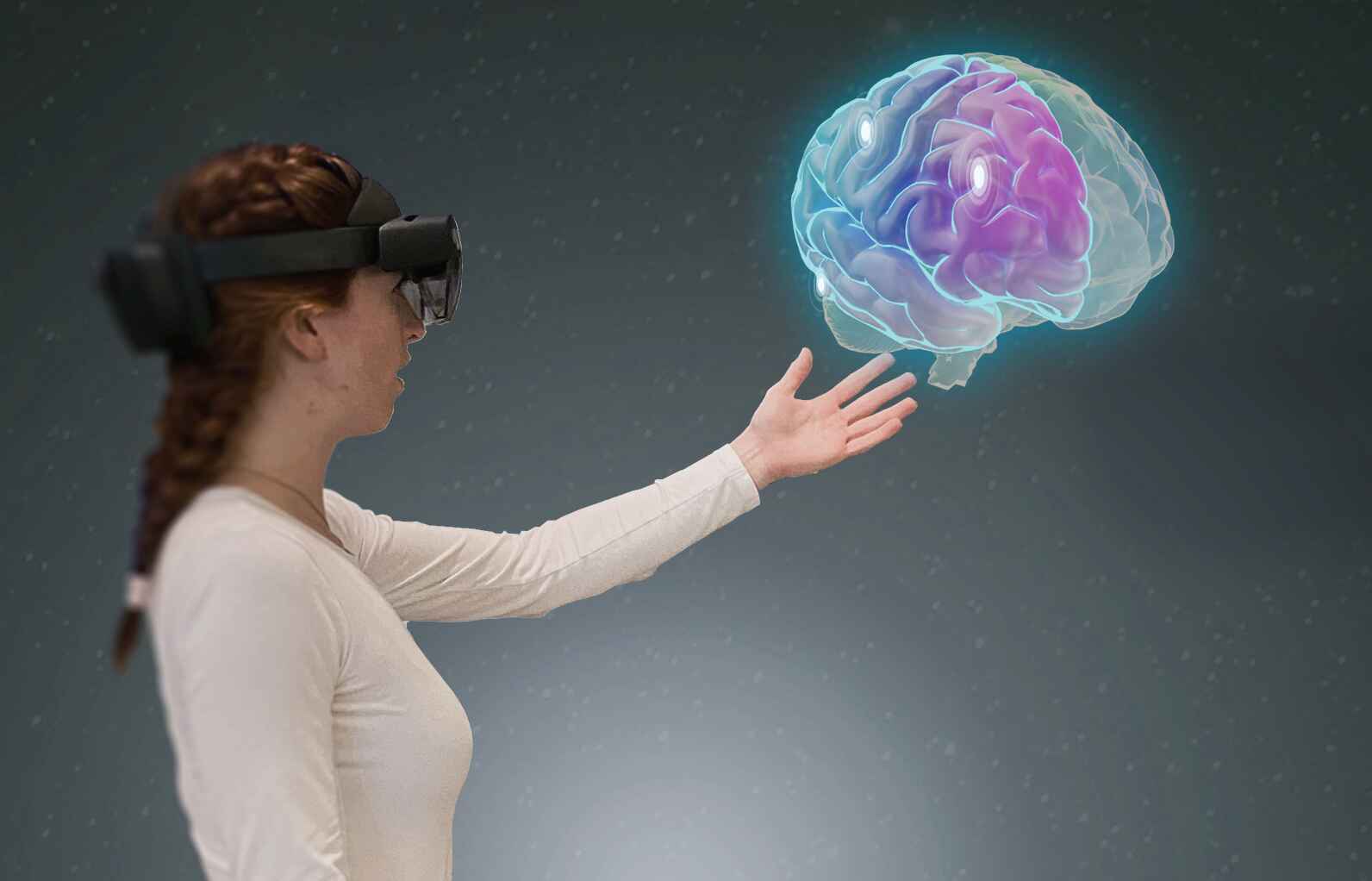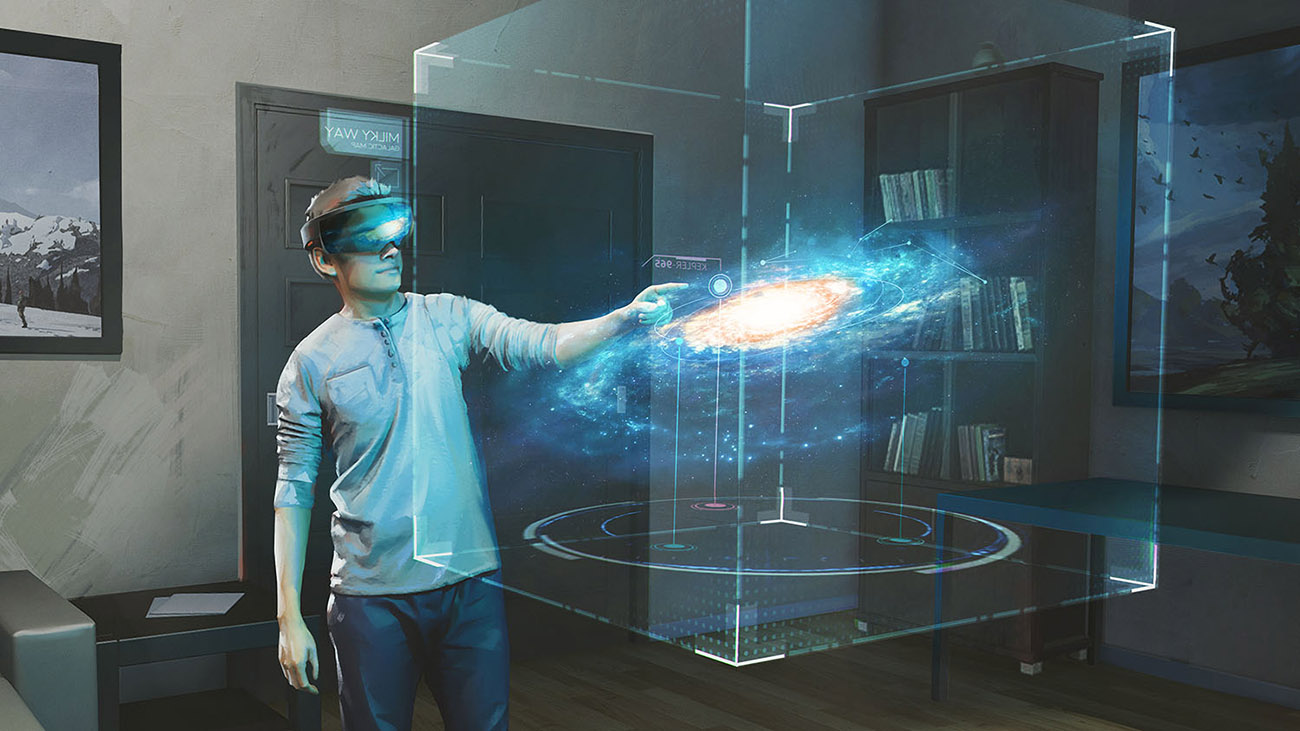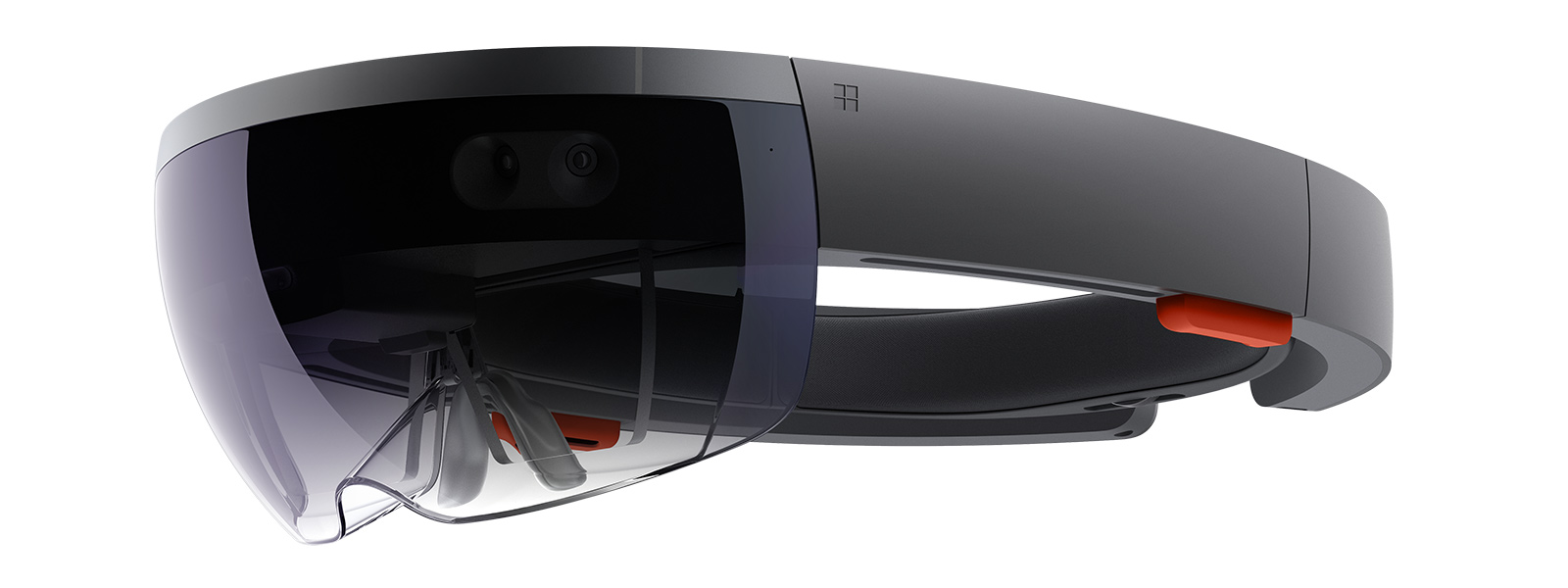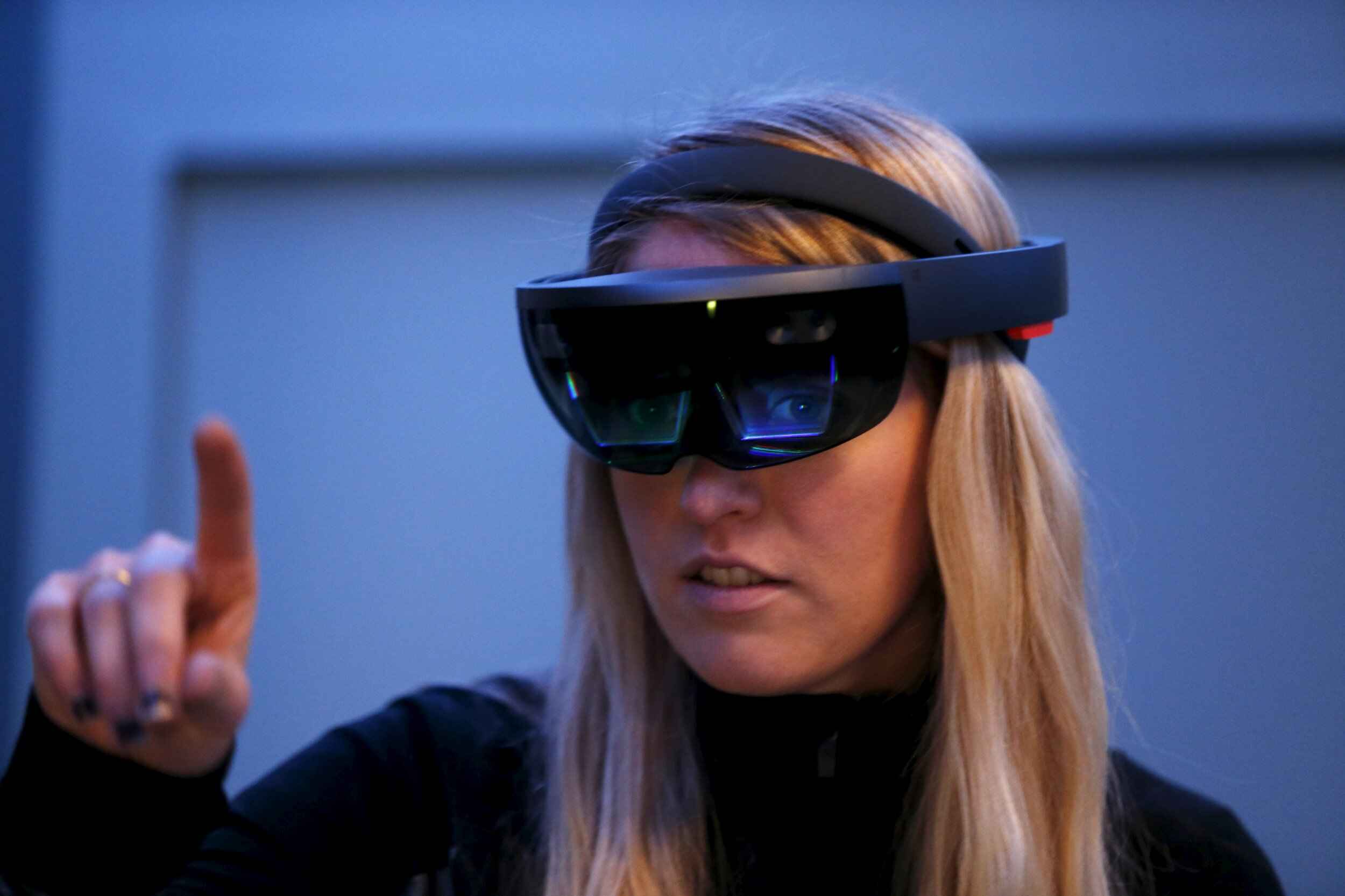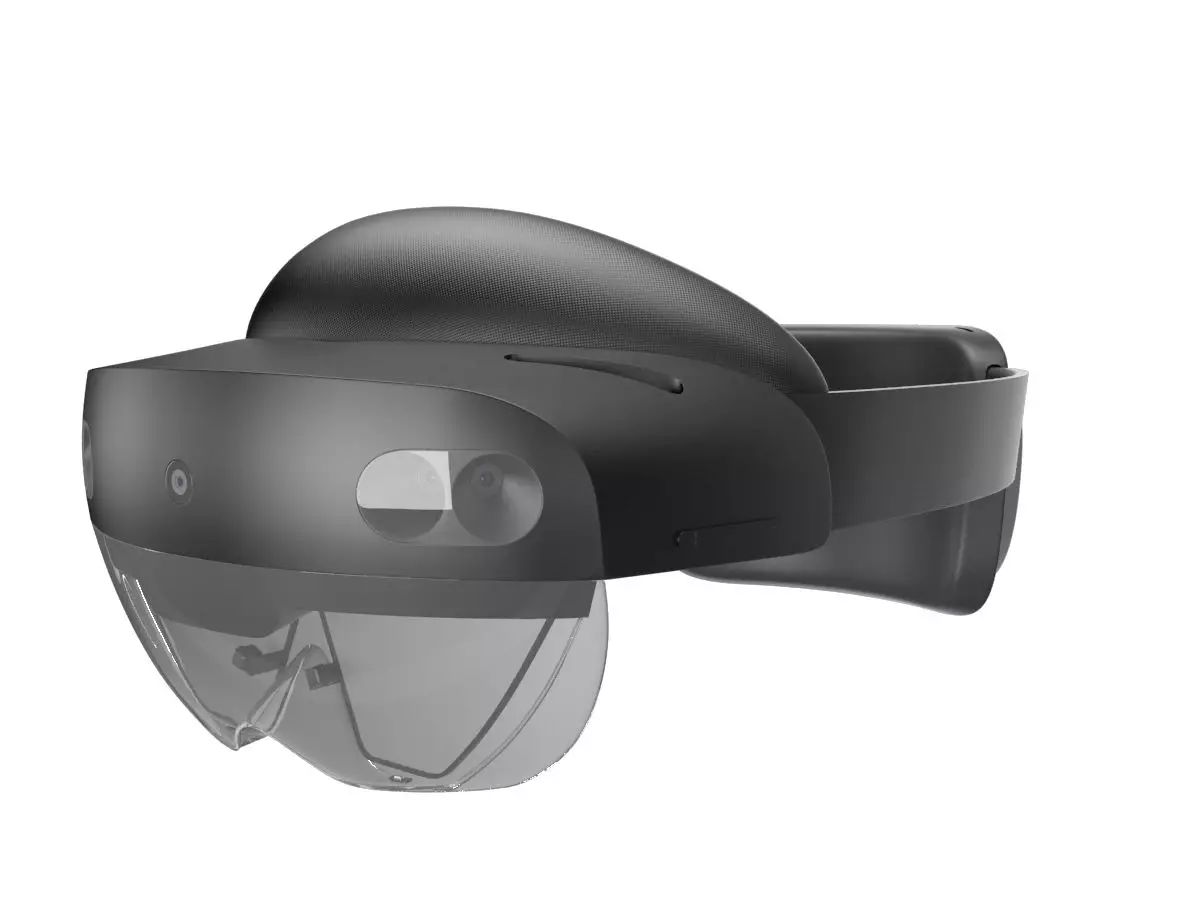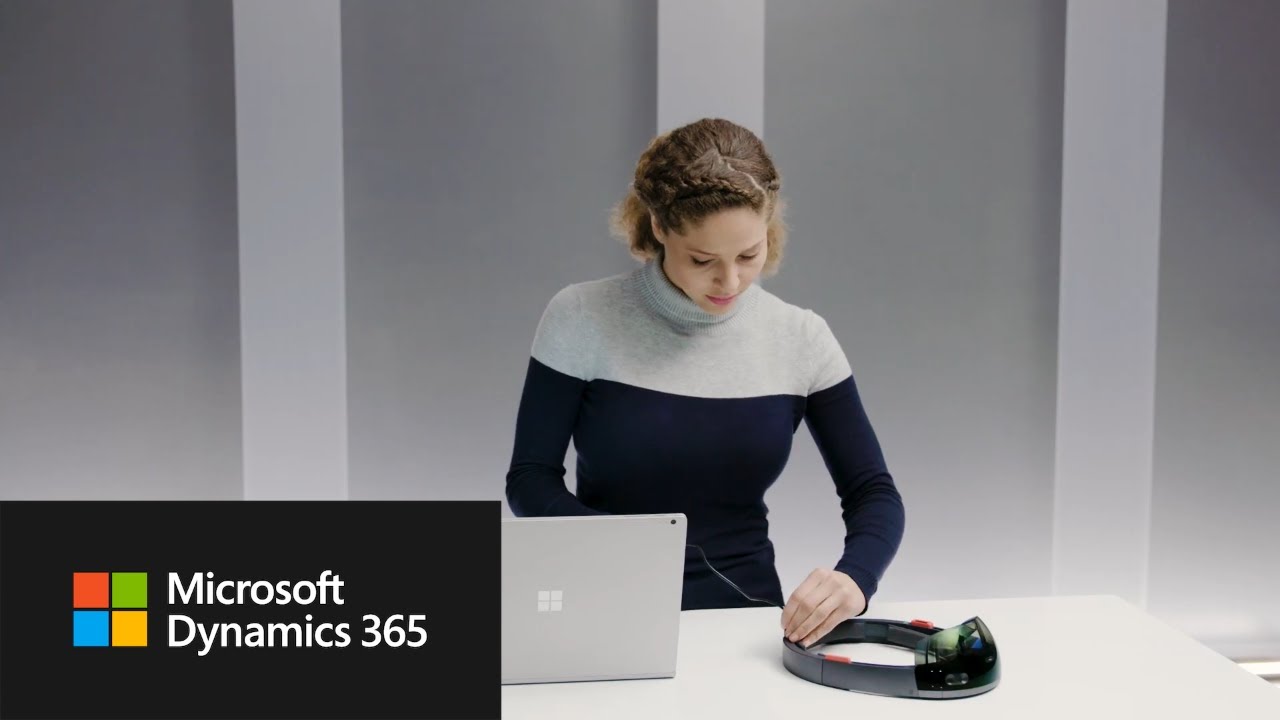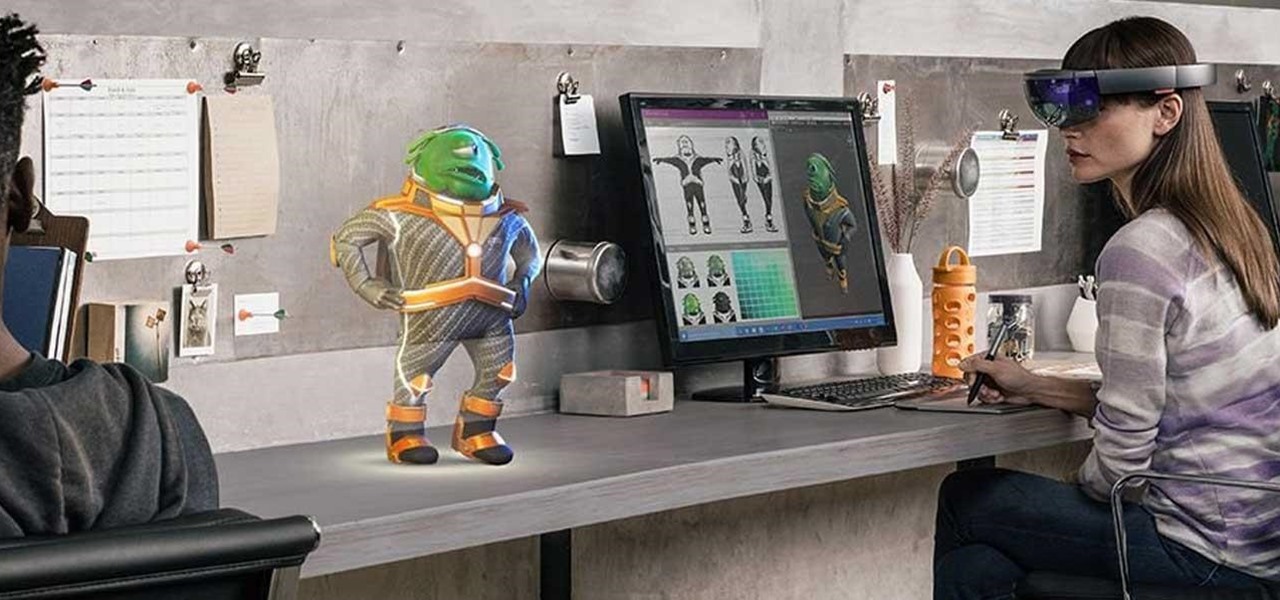The HoloLens: An Overview
The HoloLens is a cutting-edge augmented reality (AR) device developed by Microsoft. It offers a unique and immersive experience by seamlessly blending virtual content with the real world. With the HoloLens, users can interact with holograms, enabling a wide range of applications and possibilities across various industries.
One of the standout features of the HoloLens is its ability to create holographic displays. Unlike virtual reality (VR) devices that completely immerse users in a digital environment, the HoloLens overlays holograms onto the real world, allowing users to see and interact with both at the same time. This mixed reality experience opens up a world of opportunities for gaming, training simulations, design, and much more.
The HoloLens is equipped with advanced sensors and cameras that track the user’s movements and spatial positioning. This enables precise gesture and voice recognition, allowing for intuitive interactions with the holographic content. Users can navigate, manipulate, and resize holograms with natural hand gestures and voice commands, creating a seamless and immersive experience.
The HoloLens also offers impressive spatial sound capabilities, enhancing the immersion even further. Users can experience audio that seems to come from specific holographic objects, adding depth and realism to the virtual content.
This groundbreaking AR device has gained significant attention and recognition across a range of industries. From architecture and engineering to healthcare and education, the HoloLens has the potential to revolutionize the way we work, learn, and interact with our environment.
With its innovative technology and vast potential, the HoloLens has captured the imagination of developers, businesses, and consumers alike. As Microsoft continues to advance the capabilities of this remarkable device, its impact on our daily lives is likely to grow exponentially.
The History of the HoloLens
The HoloLens is the result of years of research and development by Microsoft. The journey of this groundbreaking augmented reality (AR) device began in 2015 when the first iteration, known as HoloLens 1, was unveiled.
The HoloLens 1 was a significant milestone in the field of mixed reality. It introduced users to the concept of holographic computing, where virtual content could seamlessly blend with the real world. The device garnered attention from industries such as gaming, design, and enterprise, offering new possibilities for immersive experiences and innovative applications.
Over time, Microsoft continued to refine and enhance the HoloLens technology, paving the way for the second iteration, HoloLens 2. Released in 2019, HoloLens 2 brought notable improvements in terms of comfort, field of view, and interaction capabilities.
HoloLens 2 featured a more ergonomic design, allowing for a better fit and extended usage without discomfort. It also sported a larger field of view, enabling users to see a wider range of holographic content while maintaining the same level of clarity and immersion.
In terms of interaction, HoloLens 2 introduced hand tracking and eye-tracking capabilities. This meant that users could manipulate holograms with natural hand gestures and even control the device by simply looking at specific elements.
The technology behind the HoloLens has not only attracted attention from consumers and businesses but also from the military and healthcare sectors. The United States military, for instance, adopted the HoloLens for training and simulation purposes, leveraging its unique capabilities for mission planning and execution.
Furthermore, the healthcare industry has explored the potential of the HoloLens in areas such as surgical planning, medical education, and remote assistance. The device’s ability to overlay holographic information on the patient’s anatomy has opened up new avenues for improved patient outcomes and enhanced medical training.
As the HoloLens continues to evolve, Microsoft maintains its commitment to innovation and pushing the boundaries of augmented reality. The company’s dedication to improving user experience, expanding the fields of application, and bridging the gap between the virtual and real worlds positions the HoloLens as a leading AR device with immense potential.
HoloLens 1 vs. HoloLens 2: A Comparison
With the release of HoloLens 2, Microsoft took significant strides in advancing its augmented reality (AR) device technology. Let’s compare the key differences between HoloLens 1 and HoloLens 2 to understand how this innovative technology has evolved.
The first noticeable difference lies in the comfort and ergonomics. HoloLens 2 boasts a more balanced and comfortable design compared to its predecessor. The weight distribution has been improved, reducing the strain on the user’s head and making it easier to wear for extended periods.
In terms of field of view, HoloLens 2 offers a considerable improvement. The wider field of view provides users with a more immersive experience, allowing for a larger holographic display and a better sense of presence within the mixed reality environment.
Interaction capabilities have also been enhanced in HoloLens 2. It features hand tracking, which allows users to interact with holograms using natural gestures, eliminating the need for controllers or additional devices. The addition of eye tracking enables an even more intuitive and seamless user experience, as users can navigate and interact with holograms by simply looking at them.
Another significant improvement in the HoloLens 2 is the comfort level for wearers who require prescription glasses. The device now has a more accommodating design, making it easier to wear glasses while using the HoloLens.
Under the hood, HoloLens 2 features a more robust and powerful processing unit. This upgrade results in smoother performance, faster rendering of holographic content, and improved overall application and experience speed.
Both HoloLens 1 and HoloLens 2 support spatial sound, but the latter takes it a step further. HoloLens 2 boasts more advanced audio capabilities, providing more immersive and realistic sound experiences. Spatial sound enables users to perceive the direction and distance of virtual sounds, contributing to a more natural and engaging mixed reality experience.
Given the advancements in technology and user experience, it comes as no surprise that HoloLens 2 has been well-received by industries and developers alike. The improved comfort, wider field of view, enhanced interaction capabilities, and more powerful processing unit make it a significant upgrade over its predecessor.
HoloLens 2 not only refines and improves upon the successes of its predecessor but also introduces new features and enhancements that set the stage for even greater possibilities in the world of augmented reality.
HoloLens Development Kit Availability
Developers play a crucial role in exploring the full potential of the HoloLens and creating innovative applications for augmented reality (AR). Microsoft recognizes the importance of supporting developers and offers the HoloLens Development Kit for those interested in creating experiences and applications for this groundbreaking device.
The HoloLens Development Kit provides developers with the necessary tools, documentation, and resources to build applications specifically optimized for the HoloLens. This includes software development kits (SDKs) and access to the HoloLens emulator, which allows for testing and refining applications without the physical device.
To foster an active community and encourage collaboration, Microsoft has made the HoloLens Development Kit available to a select group of developers through various programs and initiatives. This includes partnerships with academic institutions, grants, and developer competitions.
Additionally, Microsoft offers the HoloLens Development Edition for purchase by developers who are looking to get hands-on experience with the HoloLens hardware. This edition includes the HoloLens device itself, access to software updates, and priority support from Microsoft’s developer team.
However, it is important to note that the availability of the HoloLens Development Kit may vary depending on region and program eligibility. Developers are advised to check Microsoft’s official website or reach out to their local Microsoft representatives for the most up-to-date information on how to access the HoloLens development tools and kits.
By providing developers with the necessary tools and support, Microsoft aims to foster creativity and drive innovation in the realm of augmented reality. The HoloLens Development Kit empowers developers to push the boundaries of AR and explore new possibilities for immersive and interactive experiences.
As the HoloLens continues to evolve, it is expected that Microsoft will keep expanding the availability of the HoloLens Development Kit, ensuring developers have the resources they need to shape the future of augmented reality.
HoloLens Release Date: Past and Future
The release of the original HoloLens marked a significant milestone in the world of augmented reality. Microsoft introduced the HoloLens 1 to the world in 2015, captivating audiences with its innovative technology and potential applications.
Since its initial release, Microsoft has continued to refine and improve the HoloLens technology. In 2019, the company unveiled the highly anticipated HoloLens 2, which brought significant advancements in comfort, field of view, and interaction capabilities.
Looking ahead, Microsoft continues to invest in the development of its augmented reality devices. While the company has not announced a specific release date for future iterations, it is evident that the HoloLens will remain a key focus of Microsoft’s technology roadmap.
Industry analysts and insiders speculate that Microsoft may release a third iteration, possibly named HoloLens 3, in the coming years. With continuous advancements in processing power, display technology, and sensor capabilities, the HoloLens 3 is expected to push the boundaries of augmented reality even further.
As the field of augmented reality continues to mature, there is growing anticipation for the next generation of HoloLens devices. The potential enhancements and features that future iterations may bring have sparked excitement among developers, businesses, and consumers alike.
Given Microsoft’s commitment to innovation and its dedication to improving the user experience, it is likely that future releases of the HoloLens will incorporate feedback and lessons learned from previous iterations. Microsoft’s continuous investment in research and development ensures that the HoloLens will continue to evolve with advancements in technology.
While the specific release date for future HoloLens devices remains unknown, it is safe to say that the future of augmented reality looks promising. The HoloLens has already made a significant impact across various industries, and its continued evolution will pave the way for even more groundbreaking applications and experiences.
As technology continues to advance, we can expect the HoloLens to remain at the forefront of the augmented reality market, revolutionizing the way we live, work, and interact with our environment.
HoloLens Pricing: What to Expect
When it comes to purchasing cutting-edge technology like the HoloLens, pricing is often a significant consideration. While Microsoft has not officially disclosed the pricing for future HoloLens devices, looking at the history of pricing can provide some insights into what to expect.
When the first-generation HoloLens was released in 2015, it came with a hefty price tag of $3,000. This price point reflected the advanced technology and limited availability at the time. The HoloLens Development Edition, targeted towards developers, was also priced at $3,000.
In 2019, with the release of the HoloLens 2, Microsoft aimed to make the device more accessible. The HoloLens 2 was launched with a price of $3,500 for the Development Edition, and a subscription option was introduced to lower the upfront cost for enterprise customers.
As technology evolves and production costs decrease, it is reasonable to expect that the pricing for future iterations of the HoloLens may become more affordable. Microsoft has shown a commitment to improving the device’s accessibility and expanding its user base, which may include adjusting the price accordingly.
Additionally, Microsoft has indicated its focus on enterprise customers, with solutions tailored to various industries. This suggests that pricing models will take into account the specific needs of enterprise users, such as subscription options, volume licensing, and specialized support packages.
It is important to note that the pricing for the HoloLens may vary based on the edition and any additional features or services offered. Microsoft may also introduce different pricing tiers to cater to different user segments, such as developers, businesses, or educational institutions.
As augmented reality technology becomes more mainstream and competition in the market grows, it is likely that Microsoft will continue to refine its pricing strategy to maintain a balance between affordability and the premium nature of the HoloLens experience.
While we can’t predict the exact pricing for future HoloLens iterations, we can expect Microsoft to make continued efforts to expand the accessibility and affordability of its augmented reality devices, as well as offer flexible options to cater to different user needs.
Where Can You Buy the HoloLens?
If you’re interested in purchasing the HoloLens, you may be wondering where you can buy this cutting-edge augmented reality (AR) device. Microsoft, as the developer and manufacturer of the HoloLens, is the primary source for acquiring the device.
You can purchase the HoloLens directly from the official Microsoft website. The Microsoft Store offers different editions of the HoloLens, including the Development Edition and Enterprise Edition, depending on your specific needs and intended use.
In addition to the Microsoft Store, authorized resellers and selected retail partners may also offer the HoloLens for sale. These partners may include technology retailers or specialized AR and VR vendors. Checking with local technology retailers or visiting their websites can provide information on whether the HoloLens is available for purchase through these channels.
It’s worth noting that the availability of the HoloLens may vary depending on your location. Microsoft often prioritizes certain regions for the release of new devices and updates. Therefore, it’s recommended to check with local Microsoft representatives or authorized resellers to determine availability and purchasing options specific to your region.
As the HoloLens gains traction in various industries, it’s possible that distribution channels may expand to accommodate the growing demand. This could include partnerships with additional retailers or collaborations with specific industry vendors to ensure wider availability of the HoloLens across different markets.
When considering a purchase, it’s important to ensure that you are buying from authorized and reputable channels to guarantee the authenticity and quality of the HoloLens device. Purchasing directly from Microsoft or trusted retailers provides assurance of receiving genuine products and access to proper support and warranty services.
With the HoloLens being a significant investment, both in terms of cost and the potential it offers, it’s advisable to do thorough research and compare options before making a purchase. Additionally, staying up to date with official Microsoft announcements and product releases can ensure that you have the most accurate and current information regarding availability and purchasing options.
Whether for personal use, development purposes, or enterprise applications, obtaining the HoloLens from trusted sources ensures that you can fully explore the possibilities of augmented reality and experience the immersive and transformative world of mixed reality.
HoloLens 3: Speculation and Rumors
As the augmented reality landscape continues to evolve, speculation and rumors about the next iteration of the HoloLens, possibly named HoloLens 3, have sparked excitement and anticipation among tech enthusiasts. While Microsoft has not officially announced the release of HoloLens 3, industry insiders and analysts offer various speculations and predictions about what the future holds for this groundbreaking device.
One area of speculation revolves around improvements in the field of view. While the HoloLens 2 addressed some of the limitations of its predecessor, there is still room for expansion. It is anticipated that HoloLens 3 may feature a wider field of view, allowing for more immersive and expansive holographic experiences.
Another area of focus is the advancement of sensor technology. HoloLens 3 may incorporate more refined sensors that enhance gesture recognition, eye tracking, and object detection. These improvements would enable more seamless and natural interactions with holograms and enhance the overall user experience.
Continued miniaturization and improvements in battery life are also expected. HoloLens 3 may feature a more compact and lightweight design, making it more comfortable to wear for extended periods, and will likely address power-related issues to prolong usage without interruption.
In terms of processing power, advancements in hardware are anticipated, enabling more complex and intricate renderings of holographic content. This increase in processing capability could lead to more realistic graphics, improved spatial mapping, and enhanced visual fidelity.
Another speculated area of development is the integration of 5G connectivity. With the growth of 5G networks, HoloLens 3 may be equipped with the ability to leverage faster and more reliable wireless communication. This would open doors to real-time collaboration, streaming content, and more seamless experiences that heavily rely on cloud processing and data transfer.
Additionally, there is speculation about Microsoft’s focus on enterprise solutions with HoloLens 3. Building on the success of the HoloLens in industries such as healthcare, architecture, and automotive, the new device may be tailored to specific industry needs, offering specialized features and applications to drive productivity and innovation.
It’s important to keep in mind that these speculations and rumors are based on industry trends, analysis, and the potential direction Microsoft may take with the HoloLens technology. Only official announcements from Microsoft can provide accurate details about the actual features, specifications, and release timeline for future HoloLens devices.
As the field of augmented reality continues to evolve, the anticipation for HoloLens 3 grows. The next iteration of this innovative device holds the promise of pushing the boundaries of augmented reality even further, introducing new features and functionalities that could revolutionize how we interact with holographic content and integrate it into our daily lives.







